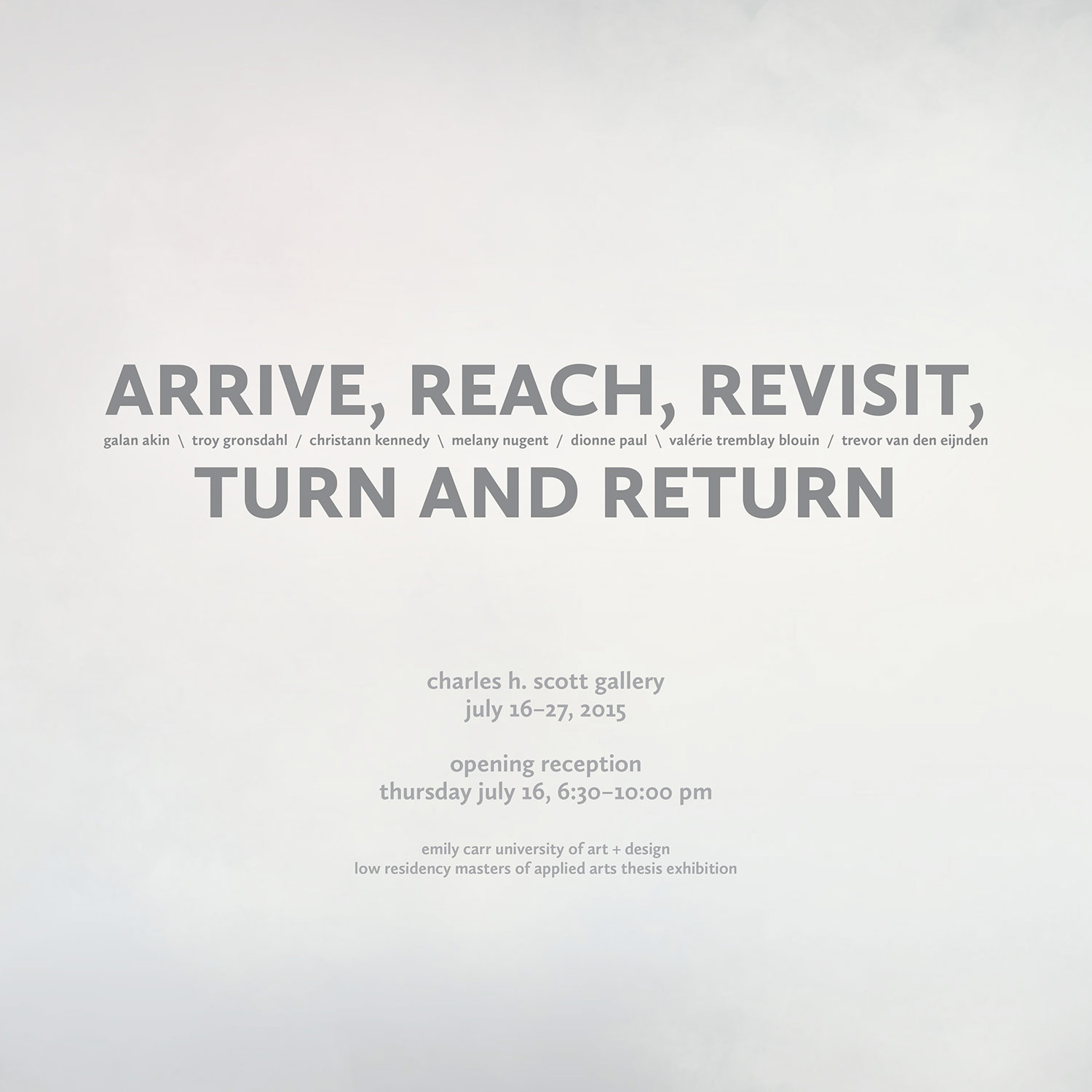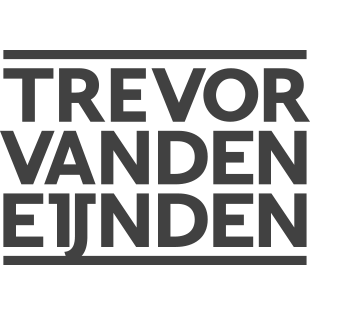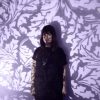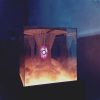
2015
Masters of Applied Art Graduate Exhibition
Trevor Van den Eijnden
Galan Akin
Troy Gronsdahl
Christann Kennedy
Melany Nugent
Dionne Paul
Valérie Tremblay Blouin
Charles H. Scott Gallery
Emily Carr University of Art + Design
1399 Johnston Street
Vancouver, British Columbia
16–27 July 2015
Opening reception Thursday 16 July 2015,
6:30–10:00 pm
For full exhibition text please click here.
A revenant is a ghost or animated corpse that has returned from beyond the grave to haunt the living. Recently, this character from European folklore has been resuscitated for a contemporary audience, resurfacing in film, books and board games. Revenants was one of many tongue-in-cheek suggestions we considered for the naming of this exhibition, although as a title that conjured up recent criticisms of various neo-art movements, it seemed like one we could easily place in our mounting pile of rejects. A little research into the origins of the term, however, provided an unexpected source of inspiration for thinking about this show.
Revenant is a conjugation of the French verb, revenir, which means to come back or return. Revenir was derived from the Latin word, reveniens, which is the past participle of the word reveniō, meaning to arrive or reach. Strung together, these words read a bit like a choreographic sequence: arrive, reach, revisit, turn and return.
A literal reading of each of word opens to a range of interpretations that can contextualize this exhibition. As a group, we arrive at another stage on our journey of artistic and professional growth. We test the reaches of our practices to present work realized through processes of invention, speculation, and reflection. Interpreted as a set of gestures, however, our title points to a way of thinking about contemporary art that is essentially performative,1 both in the sense that art is open to inexplicit ways of knowing and sharing knowledge, and in the sense that art can affect reality.
If choreography provides a useful frame of reference for thinking about exhibitions of contemporary art,2 then ours is a dance of continual reorientation. Our artistic movements respond to a shifting ground that is perpetually changing in ways that are only barely perceptible. The old dances cannot be perfectly replicated, as the foot can no longer find its corresponding position on the unstable surfaces where we situate our work.
Returning to the notion that the present is haunted by the ghosts of the past, we are reminded of the writings of American art historian Hal Foster, who has suggested that contemporary artists may seek to reconcile the condition of “coming-after” by evoking traces of this past. As Foster suggests, “maybe this living-on is not a repeating so much as a making-new or simply a making-do with what-comes-after, a beginning again and/or elsewhere.”3 Which brings us to the final two directives of our title: turn and return (and arrive, reach, revisit, turn and return again).
Trevor Van den Eijnden
#AnthropoceneTemple
This future does not exist until you make it your own; please photograph and share.
Trevor Van den Eijnden’s work investigates referents of our current geologic epoch, the Anthropocene. Rooted in a deep concern for the immediate and future implications of human culture upon the Earth, Van den Eijnden’s practice investigates the ways in which we structure and define our relationship to the natural world through design. In particular, he is involved in a critical investigation of stylized and conceptually flattened representations of minerals, flora and fauna in the repeating patterns of art and décor, and in researching Timothy Morton’s concept of the hyperobject.
Anthropocene Temple is an installation work that combines Van den Eijnden’s environmental concerns with his interest in wallpaper design since the beginning of the Industrial Revolution. Rooted in the concept of ecumenopolis (pan-global city), the individual works within the Temple offer glimpses of landscapes patterned from the hyperobjects that will bear witness to our existence well into the future. In Van den Eijnden’s words:
“Anthropocene Temple is a wallpapering for the future. Using a technique called regressive infinity, we can glimpse a metaphor writ infinite and inescapable that shows how we are patterning a world of our own making. The long shadows of the future are cast by a source in the present, so please come play in the dark of the Temple and look for some light.”
Trevor Van den Eijnden is a visual artist and designer who lives and teaches in Vancouver. Originally from Nova Scotia, he received his BFA from NSCAD University in 2005. Van den Eijnden was raised near a coast frequented by hurricanes and sharp shifts in the weather, which influenced him to develop the desire to make sense of how we understand and impact the interdependent mesh of all living and non-living entities with whom we share the Earth.




